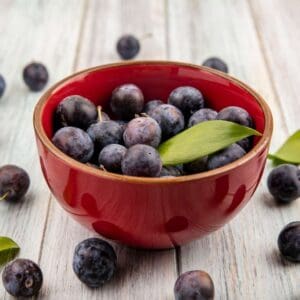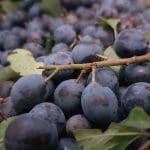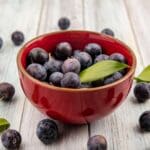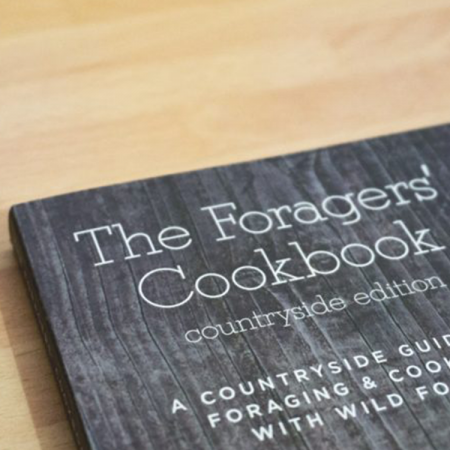The Fermented Sloe Olives are inspired by the hedgerows framing the stunning views across the fields and pine forest near my house in Dorset, I made these sloe olives with a simple aim in mind: to preserve this abundant wild, plummy fruit. I wanted to create something a little different from the classic Sloe Gin, partly because gin can be expensive and also, I’d just bought a jar of Jurassic Coast sea salt which inspired me to brine the sloes.
By Rachel Dethample
Click here to read our identification guide for Sloes (Prunus spinosa)

Ingredients:
Makes 1 x 200g jar
- 100g sloes
- 1 bay leaf
- 1 garlic clove, peeled and halved
- 3 black peppercorns (or use Wild fennel and/or Alexanders seeds)
- 4 g sea salt
- 100 ml water
Click here to read our identification guide for Wild Fennel (Foeniculum vulgare)
Click here to read our identification guide for Alexanders (Smyrnium Olusatrum)
To Make Fermented Sloe Olives You will also need:
1 x 200 g jar with airtight lid
Bay leaves, a grape vine leaf, or a clean square of cloth for weighing down
Method:
- Give the sloes a clean. Pack them into a jar, tucking the bay leaf, garlic and peppercorns (or wild spices) in as you go. Use extra bay leaves, a vine leaf or a square of clean cloth to cap the sloes, which will hold them under the brine.
- In a bowl, whisk the salt into the water until it is fully dissolved. Pour this brine over the sloes, filling the jar right to the top (you might have excess brine).
- Secure the jar with an airtight lid and set it on a plate, to hold any brine that might bubble out during fermentation. Leave to ferment at room temperature for at least two weeks – the time really depends on how strong you want the flavour to be; the longer the mushrooms ferment the funkier they get. I love fermenting them now and eating them at Christmas and beyond.
- Once you’re satisfied with the flavour, transfer the jar to the fridge to arrest the fermentation. Eat within 3 months. If the sloes become too soft you can always blend them into a paste to use for soups, dips or sauces – they make a brilliant tapenade. Just use them in any dish that calls for olives!

Learn more on Rachel here
Fermentation is one of the oldest — and most magical — ways to preserve food and boost its flavour. From tangy krauts to fizzy foraged sodas, it’s a process that transforms simple ingredients into something alive, nourishing, and full of character. These recipes are all about slowing down, getting hands-on, and letting wild microbes do what they do best. Whether you’re new to fermenting or looking to try something a little different, there’s something here to spark your curiosity — and your taste buds.










